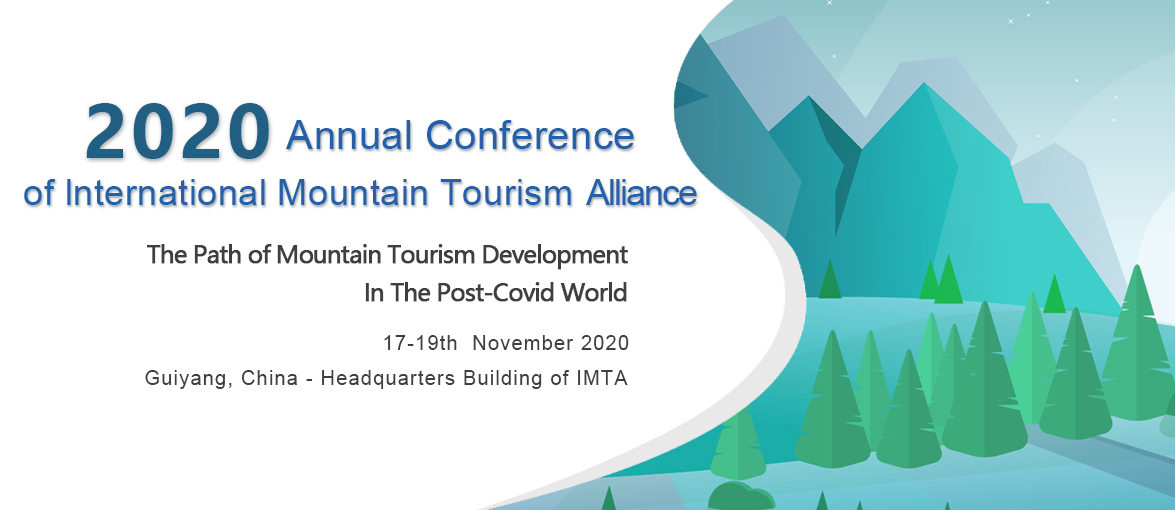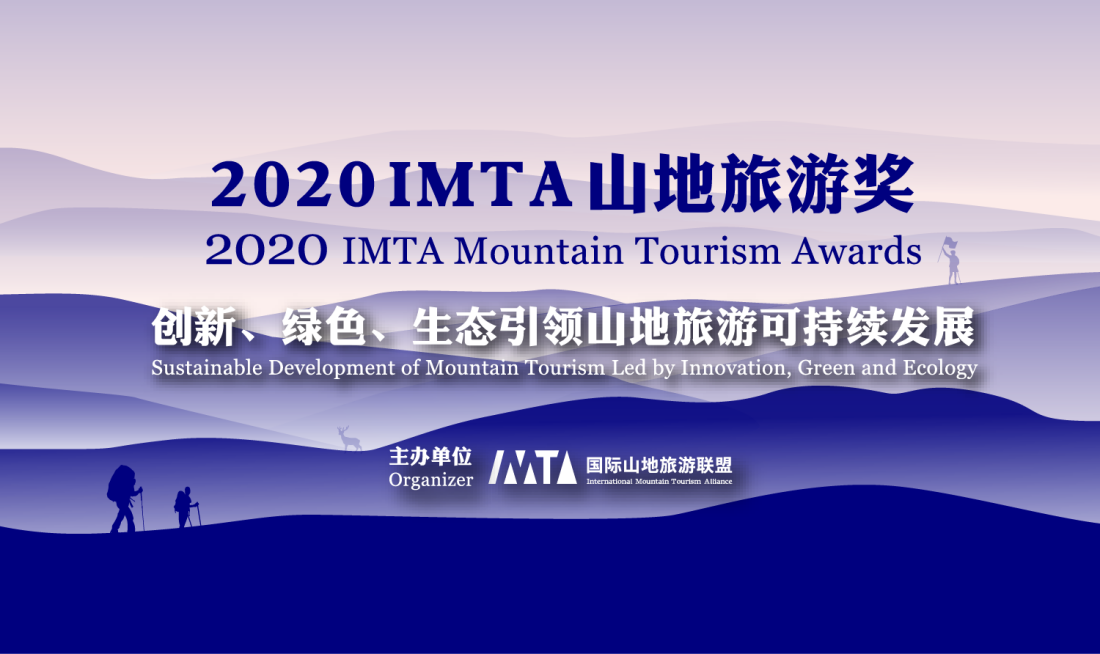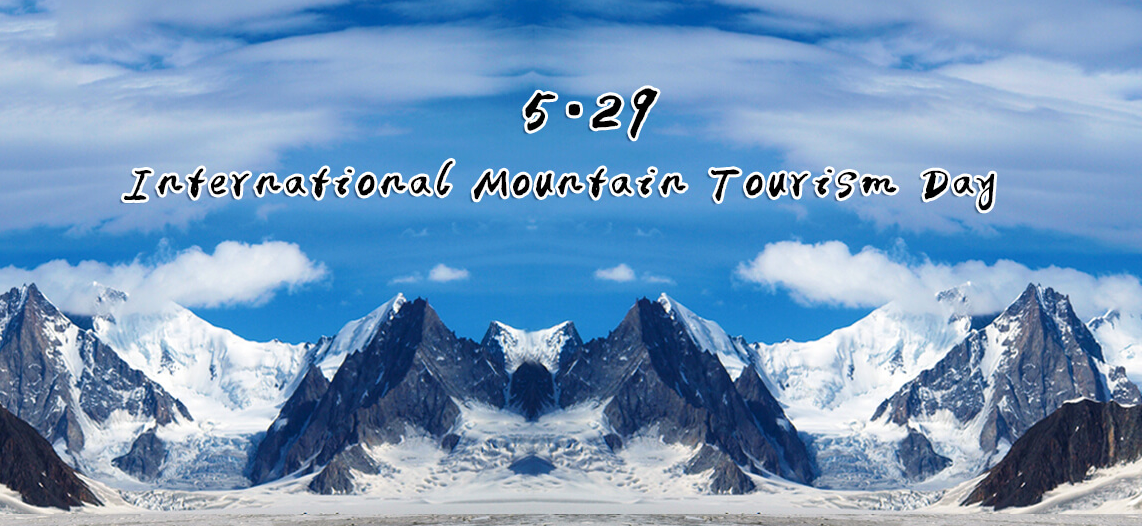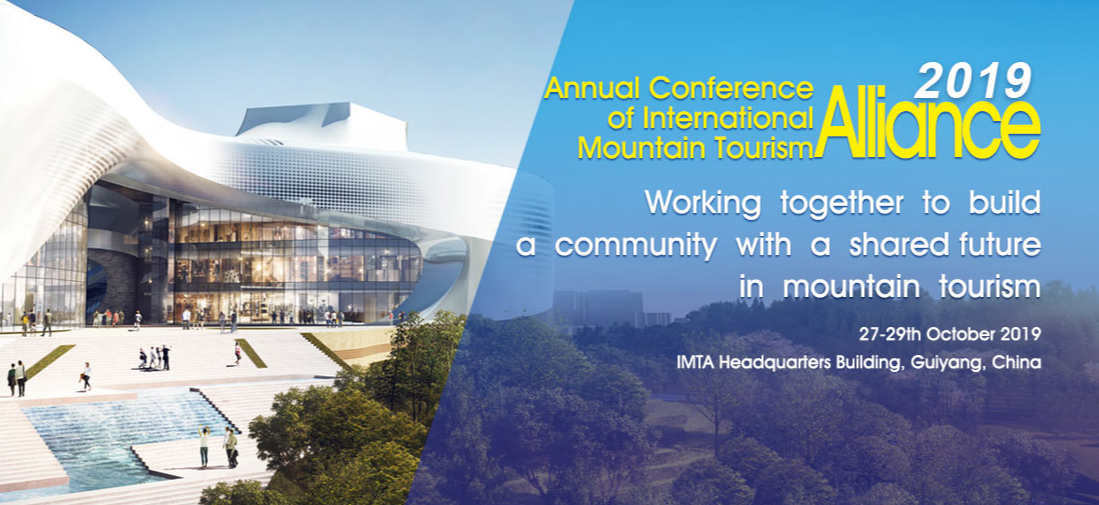EDITOR'S NOTE: On December 21, the 2021 International Mountain Tourism Alliance (IMTA) Annual Conference kicked off online. Against the backdrop of global COVID-19 pandemic, the Conference held via videoconferencing for the first time, the main venue was at IMTA headquarters in Guiyang City. International organizations, IMTA members, tourism experts, scholars and entrepreneurs from all over the world attended online, about 50 guests were presented at the main venue. The theme of the Conference is "How Can International Organizations Play a Leading Role in Global Tourism Recovery and Reshaping Governance". Francesco Frangialli, Honorary Secretary-General of World Tourism Organization (UNWTO) delivered a keynote speech online.

World tourism arrivals had reached the impressive figure of 1.47 billion in 2019. Rural tourism and mountain tourism have strongly contributed to the growth of international tourism over the past decades.
Early 2020, the Covid crisis beginning coincided for the tourism industry with the Chinese New Year vacations, to affect by successive waves the global tourism industry, starting with the air transport sector. For the period January-July 2021, arrivals are 80 per cent below the pre-pandemic year 2019.
Let us make no mistake: the crisis is not over. China, which used to rank 4th among the destinations and to be the 1st generating market for the rest of the world, is still closed to international tourism. Many other destinations are restricting again the access to their territories, fearing the dissemination of the new omicron variant.
The return to normality, if this expression makes any sense, will take time. Still, we are in a position to draw some preliminary lessons from what has happened.
In the new environment resulting from the Covid-19 pandemic, one thing appears certain: rural tourism and mountain tourism enjoy a competitive advantage: they are the destinations where visitors can be considered as being the less at risk. The concentration of tourism flows, except on a few overfrequented high-level mountain sites like Mount Everest and Mont-Blanc, or in the ancient Andean city of Machu-Picchu, is usually very weak. Generally speaking, mountain tourism is the opposite of overtourism.
In the mid of the epidemic, outdoor sports have appeared as the safest activities, since the deadly virus does not feel comfortable in large open spaces! In such circumstances, fresh air is an attraction by itself!
This health preoccupation contributed to a change in the lifestyles. Those who have the choice flee the big cities and look for places to stay in the countryside. In many touristic locations, the prices of second homes are skyrocketing.
This is the time of the so-called “digital nomads”. To some extent, working at home rather than in an office, allows a pleasant combination of periods of activity and others of leisure. Limitations to travel and progress of telecommuting affect negatively business tourism, but offer an avenue of development to both rural and mountain tourism.
For those who were still in doubt, globalization has ceased with the pandemic to be an intellectual concept to become a daily life experience.
Great caution is required for suggesting what could be the changes in public and private policies induced by the Covid crisis, as international organizations such as OECD, IMF, WTO, or the World Bank have intended. The uncertainty is still too high to draw conclusive and definitive lessons from this exceptional period of our modern history. However, it is certain, that consumers, enterprises and governments behaviors will be drastically modified, but it’s too soon to describe precisely to which extend and in which directions.
I personally keep in mind what I learnt during another major crisis for our industry: the December 2004 tsunami. The then Prime minister of Thailand, Thaksin Shinawatra, taught me that the Chinese ideogram corresponding to the English word “crisis” -Wēiji- has a double meaning: “disaster”, but also “opportunity”.
In 2020-2021, we went through a disaster, but we may be facing now a real opportunity.
Yes, an historic opportunity is there!
The unexpected circumstances resulting from the Covid crisis give us the chance to move toward an increased sustainability of the tourism industry -even if we know that it will not be an easy endeavor.
A large part of the international community agrees on the path to follow. It is generally accepted among the UN System organizations and the Bretton Woods institutions that long-term strategies have to be combined with short-term tactics. Tourism public policies have to be driven in partnership with the private sector. Tourism enterprises management has to become more agile. Thanks to increased innovation, digitalization and better training, the capacity to respond to shocks can be enhanced. Diversification and flexibility should prevail in the choice of the markets, the promotion strategy, and the selection of the products offered.
Diversification is one the keys. Destinations have been affected by the administrative and sanitary barriers that they had put in place to protect their citizens against the disease, but also by the limitations to travel imposed by generating countries to their own residents. Among the most severely affected were the destinations highly dependent on a unique and vulnerable tourism product.
In the number one mountain tourism region of the world -the Alps- the mid-altitude villages offering a broad range of four-seasons sport, cultural and leisure activities resisted rather well to the shock resulting from the Covid, when high-altitude resorts felt the inconvenient to be exclusively devoted to the practice of alpine skiing, at a time when lifts had to be closed for sanitary reasons.
Offering an extensive range of diversified tourism products and multiplying the culture and sport events (festivals, local fairs, competitions…) all year round is a way for the mountain destinations to reduce the excessive seasonality of their activity. In ski resorts, 80 per cent of more of the incomes of their inhabitants and their enterprises are obtained within a period of four months of the year. This is not sustainable in times of crisis. It has a cost because of the necessity to oversize the infrastructures in order to accommodate the peaks of frequentation.
In this difficult context, mountain and rural tourism demonstrated their strong resilience because of their higher sustainability.
In such uncertain situations, it is important not to be too dependent on a single or on a small number of generating markets. In my resort of the Alps, we traditionally welcome a large number of British tourists, who want both to practice good skiing, but also to enjoy a warm village atmosphere. They will not come this winter since the French government closed the border because of the rapid spreading of the new variant on the other bank of the Channel.
The lesson of this particular episode in the history of world tourism is clear: in the new tourism panorama which will result from the Covid crisis, destinations will have to look at an increased diversification of the products they offer and of the markets on which they are depending.
Flexibility is essential. It is a guarantee of security. In troubled situations, destinations, and especially the hospitality industry, should be able to adapt quickly to a change in the international panorama and to shift to another market, if a habitual one closes suddenly. Flexibility means also adapting to the simultaneous or successive presence of customers from various origins, with different purchasing powers, languages, tastes and traditions.
Training programs for the staff are essential to respond to that challenge. Increased digitalization of many tasks and processes is also part of the solution.
The targets and tools of the promotional activities conducted by governments and local authorities in partnership with the private sector should be also rapidly changeable if the conditions change abruptly.
Adaptation to the new environment includes in many cases shifting more the attention to its own domestic market. This could be part of the solution for mountain tourism destinations more and more suffering from the absence of snow in the mid-altitude ski resorts. But not this year, as you can see!
From that moment on, tourism, as a global phenomenon, has started to interact on a permanent basis with other happenings which have similarly turned global: epidemics, global warming and climate disorders, loss in biodiversity, transnational pollutions, cross-borders migrations, international criminality and terrorism.
Climate change in particular is an undisputable global phenomenon. It impacts all the segments of the tourism industry, but not in the same proportions and manner. Mountain tourism in high altitudes and the ski industry are the first victims of that upheaval, since, as demonstrated by the UN Intergovernmental Panel on Climate Change (IPCC), the increase in the average temperatures is much higher in altitude than at the sea level.
The IPCC sixth Assessment Report released in August 2021 shows unequivocally that global warming is unfolding more quickly than feared. It draws the attention to the emissions of methane, and to the dramatic contribution of this gas to the greenhouse effect.
The limited progress made by the recent UN Climate Change conference held in Glasgow cast doubt on the possibility to reach the target of 1.5 degrees Celsius increase in the temperature, retained by the 2015 Paris agreement. In case of an increase of 4 degrees Celsius, the ski activity will totally disappear in a country like Germany.
The trend is irreversible. In high altitude regions, cold seasons will be shrinking, glaciers and permafrost melting, snow lines retreating, snow cover depleting, and fresh water resource becoming scarcer at lower altitudes, affecting the life of the inhabitants as well as the potential for tourism in rural areas.
In various regions, forests and wetlands, with their remarkable ecosystems and their very specific wildlife and flora, are seriously endangered, reducing their interest for tourism purposes.
In short, constraints and changes resulting from the global warming will force tourism operators and destination management organizations to renounce to some activities, to invent new ones, and to implement costly mitigation and adaptation measures.
Let us listen to the call from Antonio Gutterres, the Secretary-General of the United Nations -I quote: “it is imperative that we rebuild tourism in a safe, equitable and climate friendly way”.
No one can disagree with this appeal. Still, it will be complicated for tourism enterprises and destinations financially weakened by the economic consequences of the crisis, and for governments now extremely indebted, to rebuild their tourism potential, protect the jobs of the tourism workers and facilitate their reconversion, and simultaneously invest in a transition towards a new model of tourism development.
The “green recovery”, as it is called by the World Trade Organization, may have a high financial and social cost.
In this context, and as a lesson of the crisis, betting on next-door rural and cultural tourism will appear to many people as a better option that flying to long-haul beach destinations.
Rural and mountain tourism capitalizing on the resilience of the domestic market will continue to be the key drivers of recovery from the Covid pandemic, in the short to medium term.
Ladies and gentlemen, the time for sustainable mountain tourism has come!














